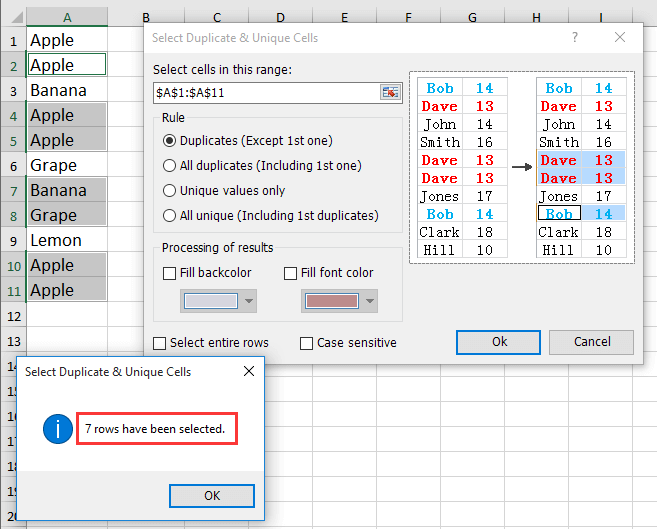5 Quick Fixes for Google Chrome's Undesired Underscores

Google Chrome, one of the most popular web browsers, is known for its sleek design and powerful features. However, some users may encounter an unexpected issue where undesired underscores appear in various places, such as menus, tabs, or even text inputs. While this issue might seem minor, it can be visually distracting and even affect the overall user experience. In this article, we will explore five quick fixes to tackle this problem and ensure a smoother browsing journey.
Understanding the Underscore Issue

The appearance of undesired underscores in Google Chrome can be attributed to several factors. One common cause is the use of certain fonts or font styles that include underscores as part of their design. This issue is more prevalent in older versions of Chrome or when specific font settings are applied. Additionally, it could be a result of compatibility issues with certain web pages or extensions.
Fortunately, there are effective solutions to address this issue and restore a clean, underscore-free browsing environment. Let's dive into the details and explore the fixes step by step.
Fix 1: Adjust Font Settings

One of the simplest ways to remove undesired underscores is by adjusting the font settings in Google Chrome. Here’s how you can do it:
- Open Google Chrome and click on the three dots in the top right corner to access the Settings menu.
- Scroll down and click on Advanced to expand the advanced settings.
- Under the System section, look for the Use custom font settings option. Toggle it off to disable custom font settings.
- Restart Google Chrome, and the underscores should disappear.
By disabling custom font settings, Chrome will use its default font rendering, which should eliminate the unwanted underscores. This fix is particularly useful if you suspect a specific font or font style is causing the issue.
Font Troubleshooting Tips
- If the problem persists, try switching to a different font style or family to identify if a specific font is the culprit.
- Consider updating your operating system and Chrome browser to the latest versions, as font rendering improvements are often included in updates.
- Resetting your font settings to default can be a quick solution. Navigate to Settings > Fonts and click on Reset fonts to restore the default font settings.
Fix 2: Disable Unnecessary Extensions
Extensions can enhance Chrome’s functionality, but they can also introduce compatibility issues. Undesired underscores might be a result of conflicts between certain extensions and Chrome’s rendering engine. To troubleshoot this, follow these steps:
- Open Google Chrome and navigate to the Extensions page by entering chrome://extensions in the address bar.
- Review the list of installed extensions and disable any that you suspect might be causing the issue. Often, it’s a good idea to start with recently installed extensions.
- Restart Chrome and check if the underscores have disappeared. If not, continue disabling extensions one by one until you identify the problematic extension.
Once you've identified the troublesome extension, you can decide whether to keep it enabled or look for an alternative that doesn't cause such issues.
Extension Troubleshooting Tips
- If disabling extensions doesn’t help, try reinstalling them one by one to see if a fresh installation resolves the problem.
- Keep your extensions updated to ensure they are compatible with the latest Chrome version. Regularly check for updates in the Extensions page.
- Consider using extension managers or organizers to efficiently manage and organize your extensions, making troubleshooting easier.
Fix 3: Clear Browser Cache and Data
Sometimes, clearing the browser cache and data can help resolve various issues, including the undesired underscore problem. Here’s how you can do it:
- Open Google Chrome and click on the three dots in the top right corner to access the Settings menu.
- Scroll down and click on Privacy and security.
- Under the Clear browsing data section, select the time range for which you want to clear the data (e.g., the last hour, the last day, etc.).
- Check the boxes for Browsing history, Cookies and other site data, and Cached images and files.
- Click on the Clear data button, and Chrome will start clearing the selected data.
Clearing the cache and data can resolve issues caused by corrupted files or temporary data. However, be aware that this process might log you out of websites and remove saved passwords, so make sure to save any essential data before proceeding.
Cache Troubleshooting Tips
- If you’re comfortable with advanced settings, you can also try clearing the browser’s Host Cache by entering chrome://net-internals/#dns in the address bar and clicking on Clear host cache.
- Regularly clearing your cache and cookies can help maintain a smoother browsing experience and resolve potential issues.
- Consider using browser extensions that automate the process of clearing cache and cookies, making it easier to maintain your browser’s performance.
Fix 4: Update Google Chrome

Keeping your Chrome browser up-to-date is essential for maintaining security and ensuring a smooth browsing experience. Updates often include bug fixes and improvements that can address issues like undesired underscores. Here’s how you can update Chrome:
- Open Google Chrome and click on the three dots in the top right corner to access the Settings menu.
- Scroll down and click on About Chrome.
- Chrome will automatically check for updates. If an update is available, it will start downloading and installing it.
- Once the update is complete, restart Chrome, and the latest version will be ready to use.
Regularly updating Chrome ensures you have access to the latest features, security patches, and bug fixes. It's a simple yet effective way to maintain a stable browsing environment.
Update Troubleshooting Tips
- If Chrome fails to update automatically, you can manually download the latest version from the Chrome website and install it.
- Consider enabling Automatic Updates in Chrome’s settings to ensure you always have the latest version without manual intervention.
- Keep an eye on Chrome’s release notes to stay informed about the latest features and changes.
Fix 5: Reset Chrome Settings
If none of the above fixes work, resetting Chrome’s settings to their default state might be the solution. This process will remove any custom settings and preferences, returning Chrome to its initial configuration. Here’s how you can reset Chrome:
- Open Google Chrome and click on the three dots in the top right corner to access the Settings menu.
- Scroll down and click on Advanced to expand the advanced settings.
- Under the Reset and clean up section, click on Restore settings to their original defaults.
- A confirmation prompt will appear. Click on Reset settings to confirm.
- Chrome will restart, and your settings will be reset to their original state.
Resetting Chrome's settings is a powerful fix, but it's important to note that it will remove any custom configurations and extensions. Therefore, make sure to back up any essential data or extensions before proceeding.
Reset Troubleshooting Tips
- If you want to keep your extensions and data while resetting Chrome, you can try a Partial Reset by following similar steps but selecting Show advanced settings and then Reset settings under the Reset settings section.
- Consider creating a backup of your Chrome profile before resetting to easily restore your settings and data if needed.
- Regularly backing up your important data and bookmarks can help minimize the impact of a full reset.
Conclusion
Undesired underscores in Google Chrome can be a minor annoyance, but with the right fixes, they can be easily resolved. By adjusting font settings, disabling unnecessary extensions, clearing cache and data, updating Chrome, and resetting settings, you can restore a clean and visually pleasing browsing experience. Remember to explore the troubleshooting tips for each fix to find the most suitable solution for your specific issue.
Happy browsing, and may your Chrome experience be free from unwanted underscores!
What if none of the fixes work for me? Is there any other solution I can try?
+If none of the provided fixes resolve the issue, it might be a good idea to seek further assistance from the Chrome support forums or reach out to Google’s support team. They can provide more specialized guidance based on your specific situation. Additionally, ensuring your computer’s operating system is up-to-date and free from any malware or viruses can also help maintain a stable browsing environment.
Are there any potential risks associated with resetting Chrome’s settings?
+Resetting Chrome’s settings is generally safe, but it’s important to be aware of the potential consequences. As mentioned earlier, a full reset will remove all custom configurations, including extensions and saved passwords. Therefore, it’s crucial to back up any essential data and extensions before proceeding. A partial reset, which keeps your extensions and data intact, can be a safer option if you’re not sure about a full reset.
Can I prevent undesired underscores from appearing in the future?
+While it’s challenging to guarantee the prevention of all browser-related issues, there are a few best practices you can follow. Regularly updating Chrome, keeping your operating system up-to-date, and maintaining a clean and organized browser environment (e.g., disabling unnecessary extensions) can help minimize the chances of encountering such issues. Additionally, being cautious about the websites you visit and the extensions you install can also contribute to a smoother browsing experience.



